1. Seasonal Displays That Never Leave
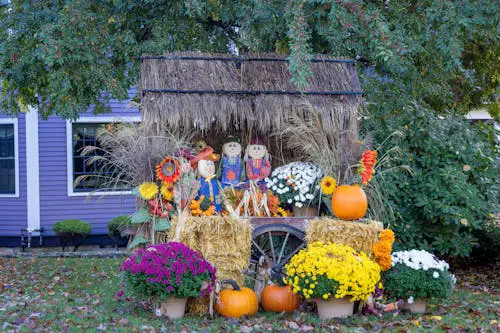
Holiday decorations bring joy—for a while. But when that inflatable Santa is still waving from your lawn in February, people start to talk. Most HOAs have rules about when decor should go up and come down, usually allowing two weeks before and after a holiday. Long-neglected lights or out-of-season displays can make an otherwise polished street look cluttered.
Neighbors often see it as a sign of disregard for community standards. Even if the décor is meaningful, letting it linger past its prime creates tension. Some HOAs fine offenders, while others rely on neighborly nudges or online callouts. No matter how you slice it, Halloween pumpkins in December never go unnoticed.
2. Brightly Colored Flower Beds
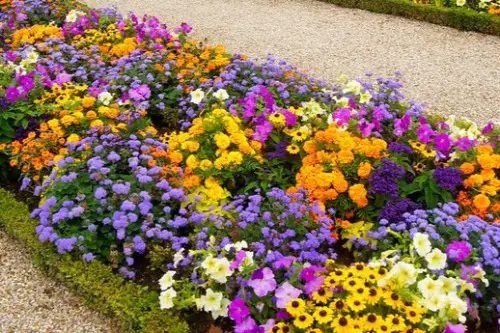
You’d think flowers would be safe from scrutiny, but too many bold hues can cause quiet tension on the block. Some homeowners plant vivid varieties—like bright celosia or bougainvillea—that can dominate the visual field. These can clash with the more subdued, coordinated color palettes many HOAs try to maintain. It’s not uncommon for neighbors to complain that such beds are “too loud” or “distracting.”
HOAs often prefer landscaping that blends in, rather than draws attention. Flashy, non-native blooms may also be harder to manage or spread more aggressively than locals expect. Even when the flowers are thriving, their bold appearance may be seen as showing off or ignoring the rules. That’s when whispers start turning into official complaints.
3. Rock Gardens Instead of Grass
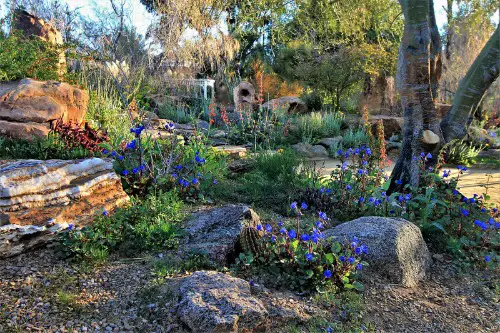
Swapping out grass for rocks might make sense in a dry climate, but it’s not always a welcome move. Xeriscaping, which emphasizes low-water plants and gravel, can be practical and eco-friendly. Still, some see it as visually cold or uninviting, especially when done without much thought to design. When weeds poke through or the area lacks color, it can look unfinished or neglected.
Some HOAs limit how much of your yard can be covered in non-living material. Even well-maintained rock gardens can face resistance if they clash with community aesthetics. While some neighbors applaud the conservation effort, others think it downgrades curb appeal. That difference in taste is often enough to land you on the next HOA agenda.
4. Giant Vegetable Gardens

A homegrown veggie patch may sound charming, but front-yard versions can stir strong opinions. Tomatoes, squash, or corn may sprawl out of their beds and appear chaotic next to trimmed hedges and manicured lawns. Many HOAs restrict food gardens to backyards for that exact reason—to preserve curb appeal. Even when neatly planted, vegetables aren’t usually part of the community’s approved look.
There’s also concern about what a large edible garden might attract. Pests like raccoons, squirrels, and insects often follow the food, and that bothers nearby residents. While some argue these gardens promote sustainability and food security, others see them as high-maintenance and messy. The tension lies in whether your front yard should feed your family—or fit in with the neighborhood.
5. Over-The-Top Topiary
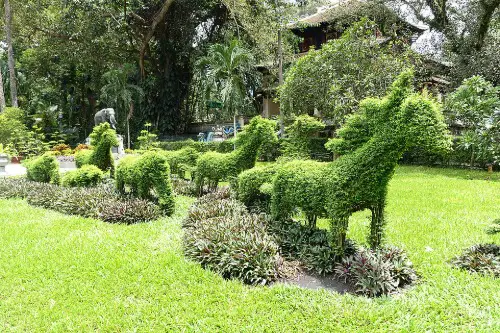
Shrubs trimmed into whimsical shapes like spirals, animals, or abstract art can quickly become the talk of the street. To some, it’s creative and impressive; to others, it’s just overkill. These sculpted plants might technically fall under landscaping, but they often violate unwritten rules about subtlety. A bold topiary makes a big statement, and not every HOA wants statements in the front yard.
In some cases, the maintenance alone becomes a problem. When elaborate shapes are neglected, they lose their charm and turn into odd, lumpy bushes. HOAs may reference guidelines requiring “natural” forms, effectively barring artistic trimming. When neighbors think your hedges are showing off, expect it to come up—just not always to your face.
6. Pollinator Gardens Gone Wild
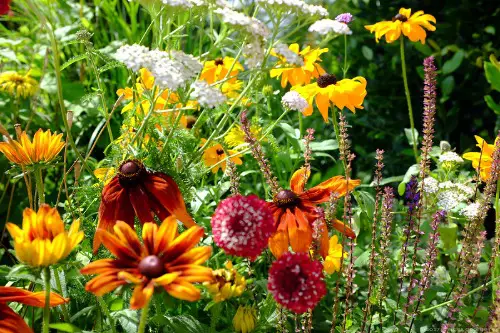
Supporting bees and butterflies is a noble cause, but when your garden starts resembling a field, neighbors take notice. Tall native flowers like milkweed and goldenrod often spread fast and lack the tidy edges HOAs prefer. These pollinator havens may look “messy” to those used to more sculpted beds. Even a well-intentioned garden can violate height limits or maintenance expectations.
Supporters argue that these gardens help with biodiversity and reduce lawn chemicals. Critics say they blur the line between natural and neglected. Some communities have ended up in legal battles over a resident’s right to plant native species. In neighborhoods where uniformity is king, even wildflowers can cause controversy.
7. Giant Privacy Hedges
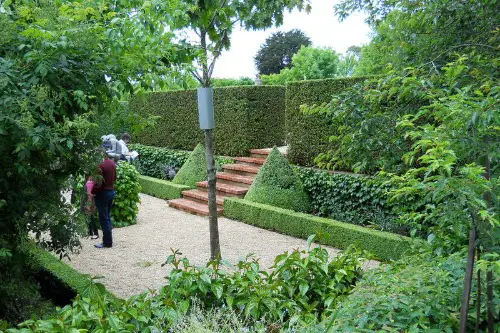
Planting a thick hedge for privacy might seem like a harmless solution, but it often triggers complaints. Fast-growing options like arborvitae or Leyland cypress can quickly exceed six feet, surpassing many HOA height restrictions. These green walls block views and sunlight, which frustrates surrounding homeowners. Some even argue that they make a home look closed-off or unwelcoming.
HOAs may allow hedges but still regulate their size and location, especially near property lines. Left untrimmed, these plants can become enormous and difficult to manage. That turns them from a tidy solution into a neighborhood headache. Once someone files a complaint, the hedge becomes everyone’s business.
8. Water Features That Go Too Far
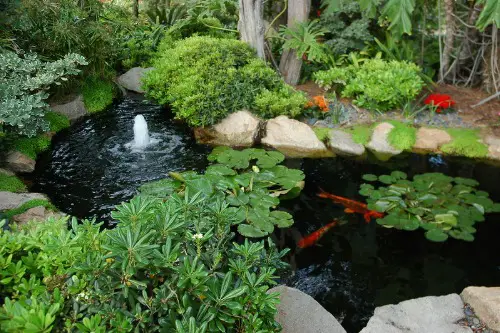
A bubbling fountain might be charming, but koi ponds with faux rock waterfalls can be a tipping point. When water features grow in size or complexity, they risk clashing with the low-key landscaping vibe most HOAs enforce. These setups often use more water than expected or create unwanted noise with pumps and trickling streams. They can also attract mosquitoes if not maintained properly.
Beyond aesthetics, there’s also liability. Open ponds pose risks to curious kids and wandering pets. That’s why many HOAs restrict water features by size, depth, or visibility from the street. The bigger the splash, the more likely it’s discussed behind closed doors.
9. Astroturf Lawns
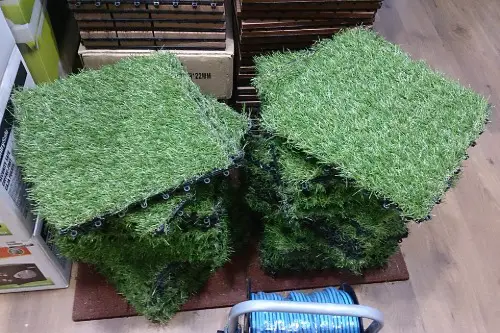
It might look perfectly green year-round, but artificial grass has a way of sparking debate among neighbors. While some love the no-maintenance, always-pristine appearance, others see it as an eyesore that lacks the authenticity of real grass. In certain communities, synthetic turf is even banned due to concerns over aesthetics, poor drainage, or how hot it gets in the sun. Especially during summer, fake lawns can reach dangerously high temperatures—sometimes over 150°F—posing safety risks for pets and kids.
There’s also a deeper environmental divide. Critics argue that artificial turf harms soil health and may contribute to microplastic runoff over time. Supporters, however, point to its ability to reduce water use—especially in drought-stricken regions. That clash between sustainability and traditional beauty keeps this subject simmering in HOA circles.
This post 9 Garden Choices That Neighbors Whisper About at HOA Meetings was first published on Greenhouse Black.
